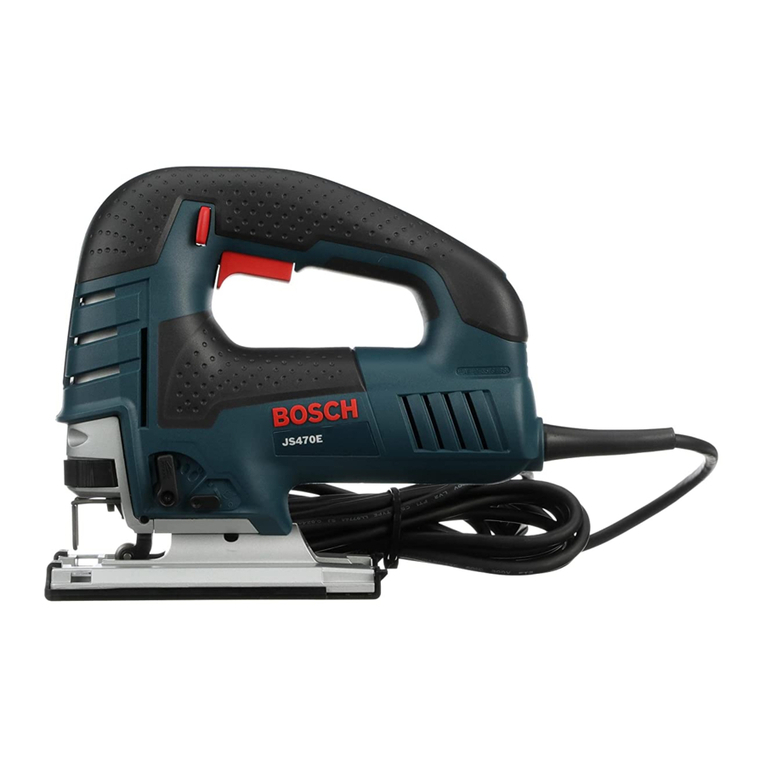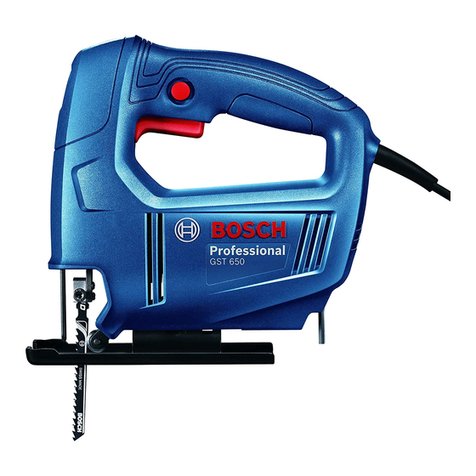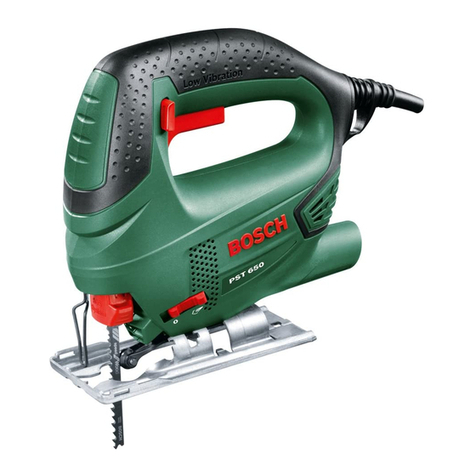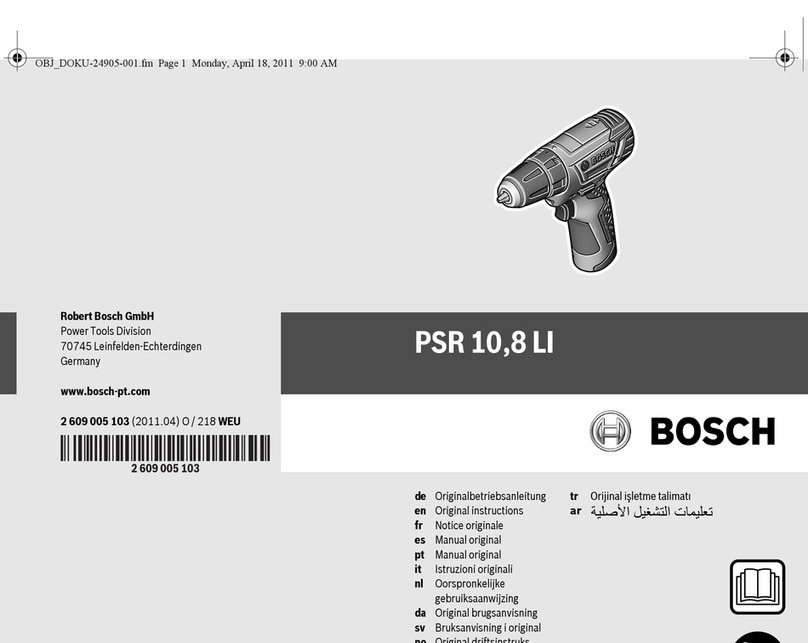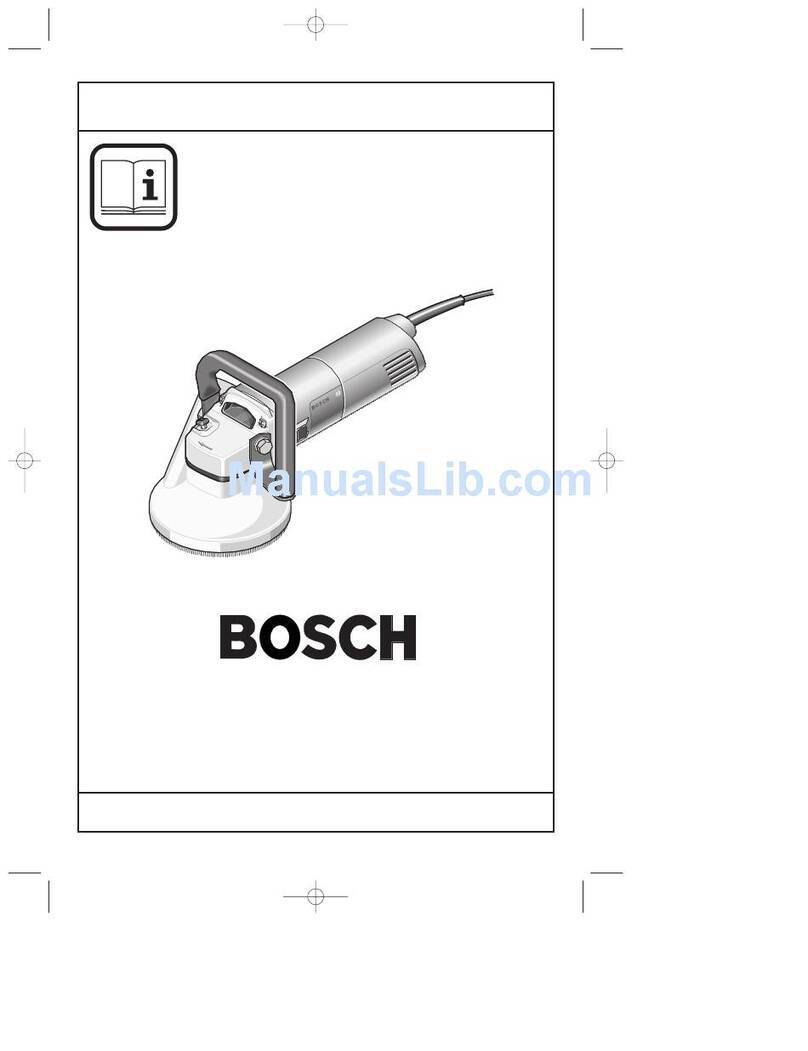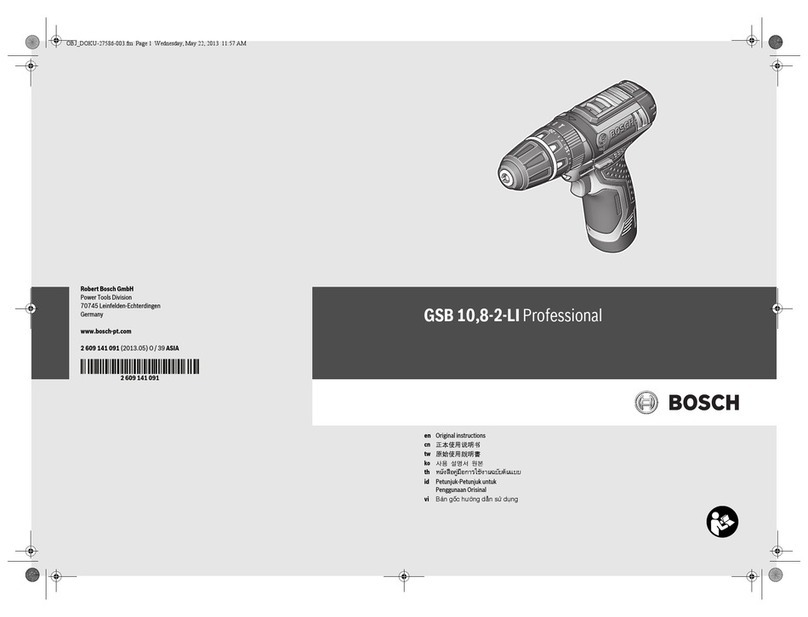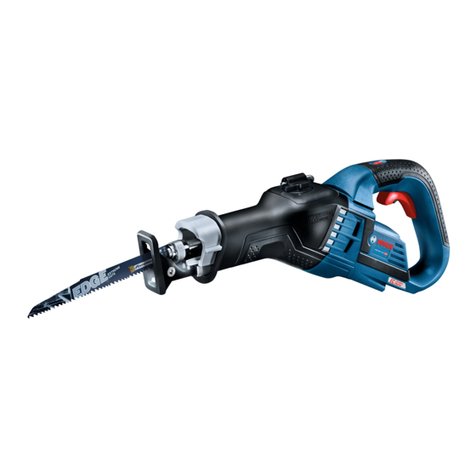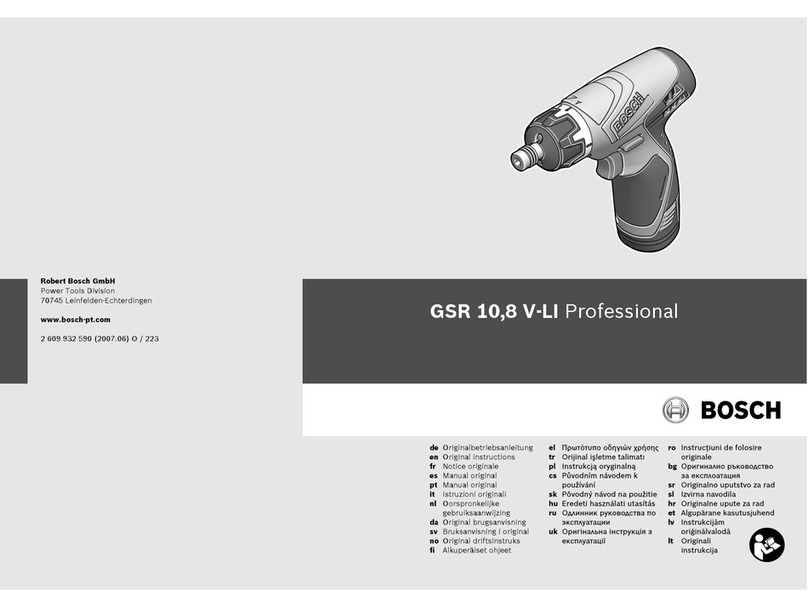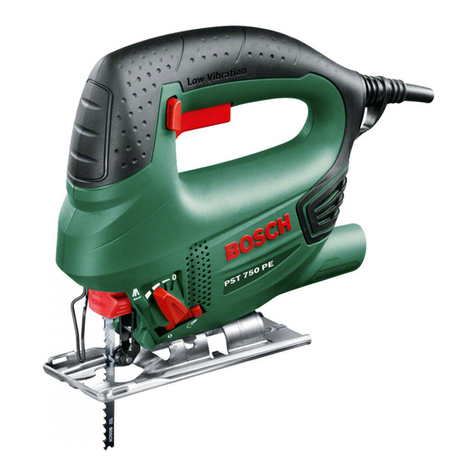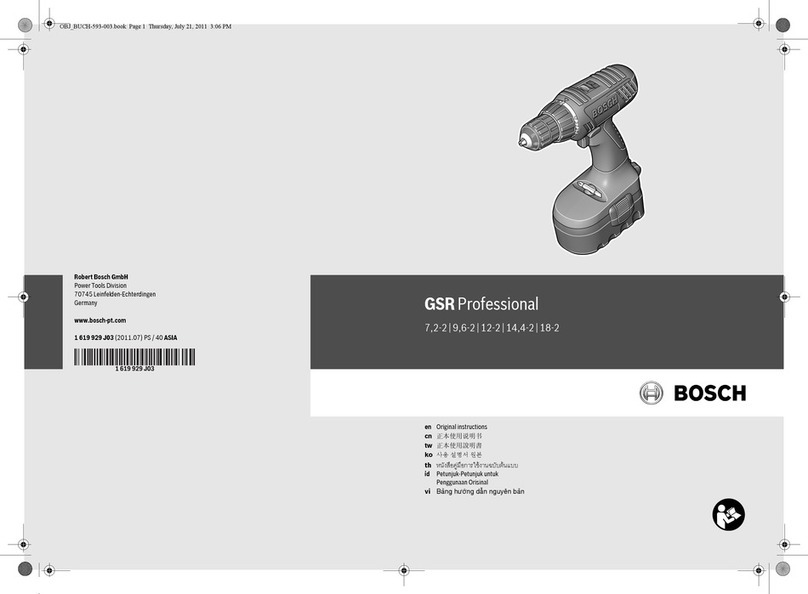12 | English
2 609 140 939 | (8.3.12) Bosch Power Tools
Method of Operation (see figures A–B)
The measuring tool checks the base material of sensor area
12 in measurement direction Ato the max. detection depth
(see “Technical Data”). Objects are detected that differ from
the material of the wall.
Always move the measuring tool in a straight line over the sur-
face applying slight pressure, without lifting it off or changing
thepressure.Duringmeasurement, thecontactpads 11must
always have contact to the surface.
Measuring Procedure
Position the measuring tool on/against the surface being
detected,and move it indirectionB.Whenthe measuring tool
comes closer to an object, the amplitude in measuring indica-
tor iincreases and ring 1lights up yellow; when it is moved
away from the object, the amplitude decreases. Measuring
indicator iindicates the maximal amplitude above the centre
of the object; ring 1lights up red and an audio signal sounds.
For small or deeply embedded objects, ring 1can continue to
light up yellow, while there is no audio signal.
fWide objects are not indicated by the illuminated ring
or the audio signal throughout their complete width.
To localise the object more precisely, move the measuring
tool repeatedly (3x) back and forth over the object. The fine
scale jis automatically activated in all operating modes. Fine
scale jindicates a full amplitude when the object is below the
centre of the sensor or when the maximum amplitude of
measuring indicator iis reached. In the operating modes
“Drywall” and “Metal”, the indication “CENTER” klights up
additionally.
Wider objects in the base material are detected through a
continuous, high amplitude of measuring indicators iand j.
Ring 1lights up yellow. The duration of the high amplitude
corresponds approximately with the object width.
When very small or deeply embedded objects are being
sought and measuring indicator ireacts only slightly, move
the measuring tool repeatedly over the object in horizontal
and vertical direction. Pay attention to the amplitude of fine
scale j, and when in operating mode “Drywall” and “Metal”,
additionally to the “CENTER ” kindication, which will then al-
low for precise detection.
fBefore drilling, sawing or routing into a wall, protect
yourself against hazards by using other information
sources. As the measuring results can be influenced
throughambientconditionsorthe wall material, there may
be a hazard even though the indicator does not indicate an
objectinthesensorrange(noaudiosignalor beep and and
the illuminated ring 1lit green).
Operating Modes
The best measuring results are achieved through selection of
the operating modes. The maximal detection depth for metal
objects is achieved in the operating mode “Metal”. The max-
imal detection depth for “live” conductors is achieved in the
operating mode “Power cable”. The selected operating
mode can be recognized at any time via the green illuminated
operating-mode indication 4.
Drywall
The operating mode “Drywall” is suitable for detecting wood
or metal objects in drywalls.
Press button 10 to activate the operating mode “Drywall”.
The operating-mode indication 4above button 10 lights up
green.As soon as the measuring tool is positioned against the
base material to be detected, ring 1lights up green and sig-
nals operational readiness.
Inthe operatingmode“Drywall”all object types aredetected
and indicated:
– Non-metal, e.g. a wood beam
– Magnetic, e.g. reinforcing steel
– Non-magnetic, but metal, e.g. copper pipe
– “Live”, e.g. a “live” conductor
Notes:In the operating mode “Drywall”, other objects, apart
from wood and metal objects and “live” conductors are also
detected, such as plastic tubing filled with water. For such
objects, the indication cfor non-metal objects is indicated in
display 3.
Nails and screws in the base material may cause a wooden
beam to be indicated as a metal object on the display.
When display 3indicates a continuously high amplitude of
measuring indicator iand fine scale j, restart the measuring
procedure again by positioning the measuring tool at a differ-
ent location on the base material.
When the illuminated ring 1does not signal operational read-
iness when positioning the measuring tool on the base mate-
rial being detected, the measuring tool cannot properly de-
tect the base material.
– Pressandholdbutton 10untilthe illuminatedringlightsup
green.
– When starting a new measuring procedure afterwards and
positioning the measuring tool onto a different wall or sur-
face, you must briefly press button 10.
– In rare cases, the measuring tool may not be able to detect
thebasematerialbecausethe side with the sensor area 12
and the type plate 13 is soiled or dirty. Clean the measur-
ingtoolwithadry,softclothandrestartthemeasuringpro-
cedure.
Metal
The operating mode “Metal” is suitable for detecting magnet-
icand non-magnetic objects independent of the wall material.
Pressbutton 9to activate theoperating mode “Metal”. The il-
luminated ring 1and indication 4above button 9light up
green.
When the detected metal object is of magnetic metal (e.g.
iron), the symbol eis indicated on display 3. For non-magnet-
ic metals, the symbol dis indicated. In order to differentiate
between metal types, the measuring tool must be positioned
above the detected metal object (ring 1is lit red).
Note:For reinforcementsteelmesh andsteelin theexamined
base material, an amplitude is indicated over the complete
surface of measuring indicator i. For reinforcement steel
mesh, it is typical that the symbol efor magnetic metal is indi-
cated on the display directly above the iron rods, whereas be-
tween the iron rods, the symbol dfor non-magnetic metal will
appear.
OBJ_BUCH-1222-005.book Page 12 Thursday, March 8, 2012 11:26 AM

